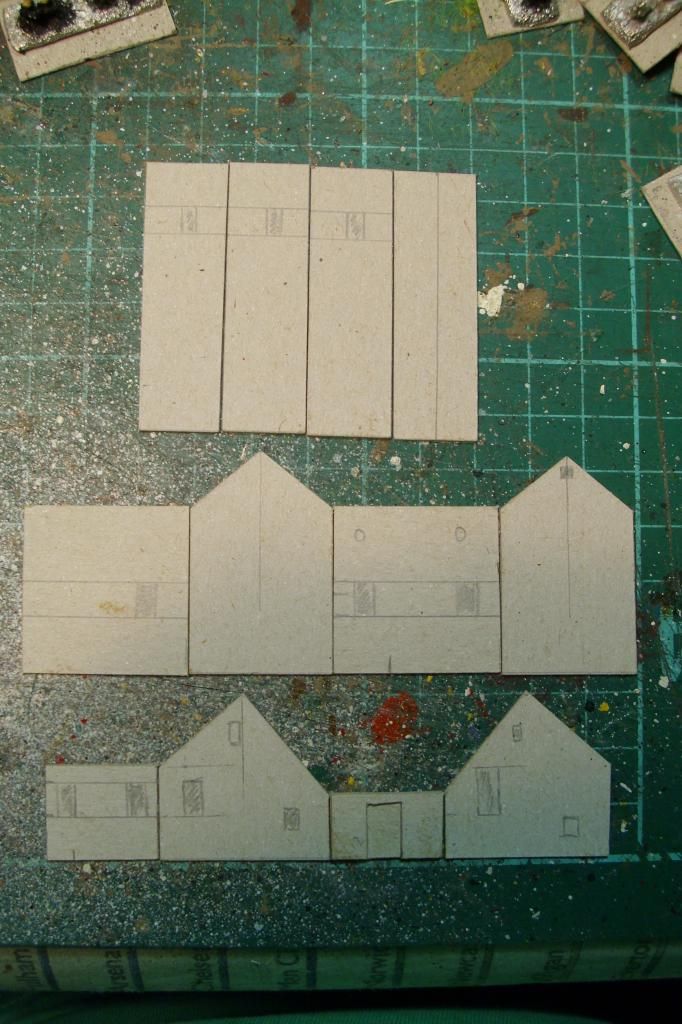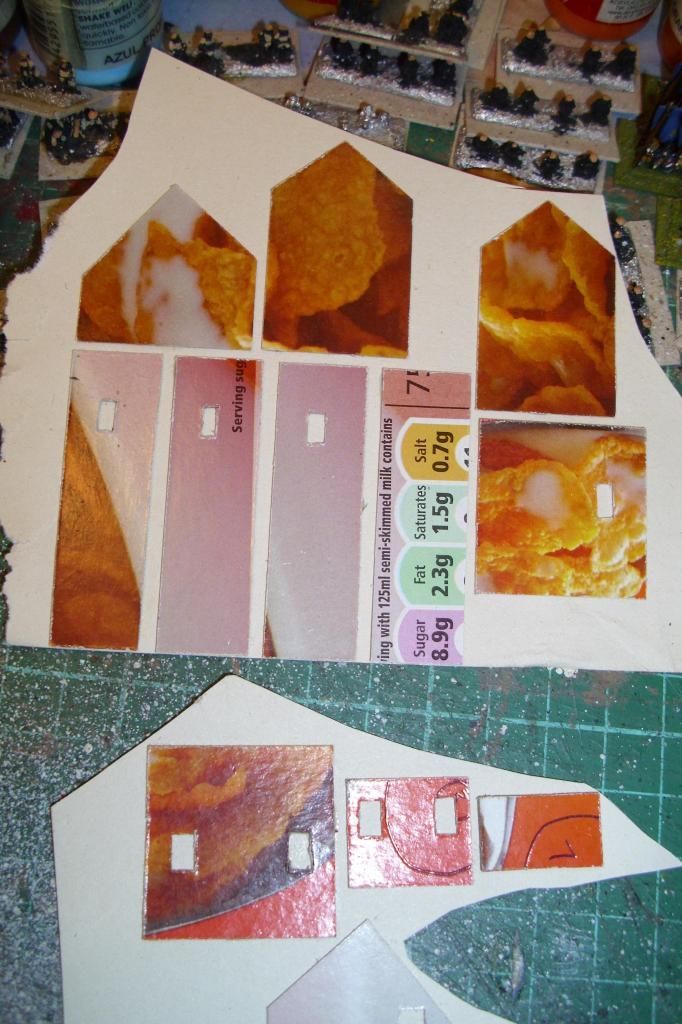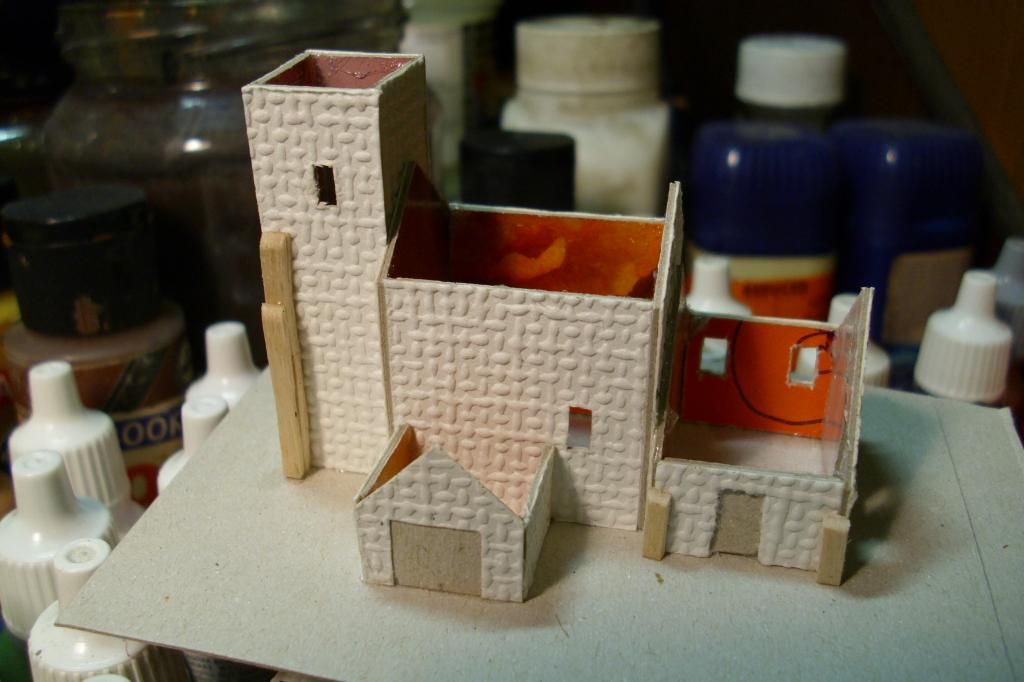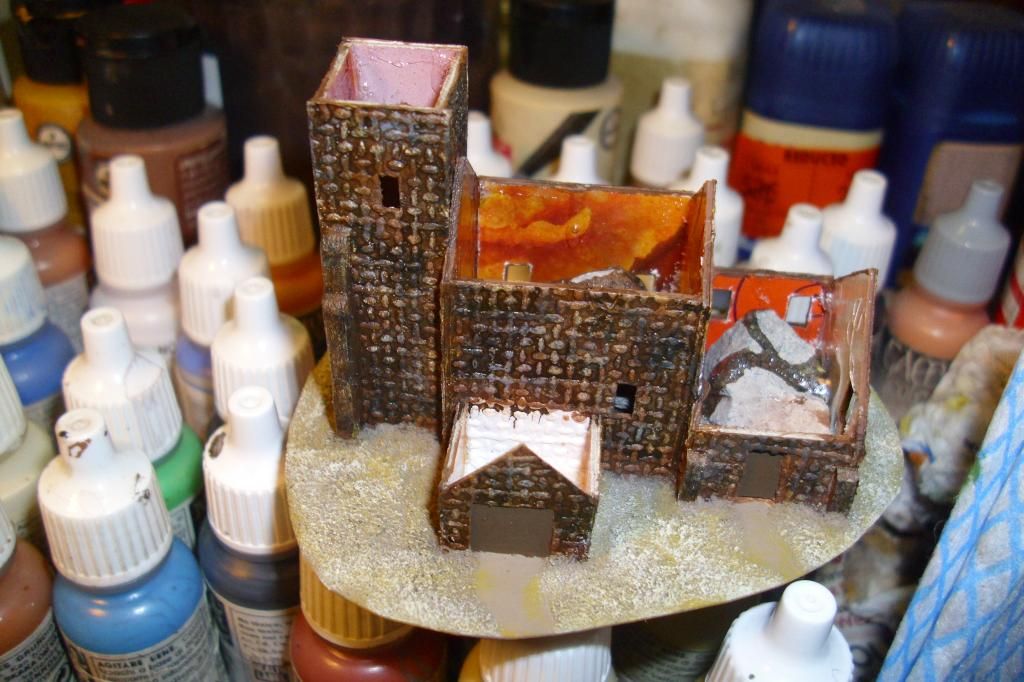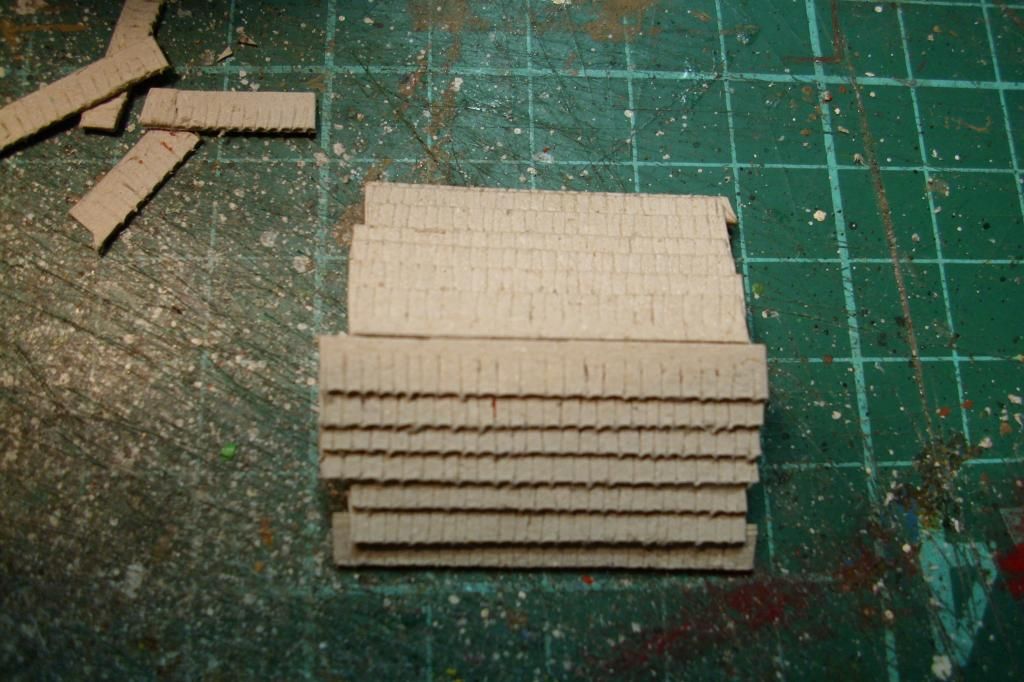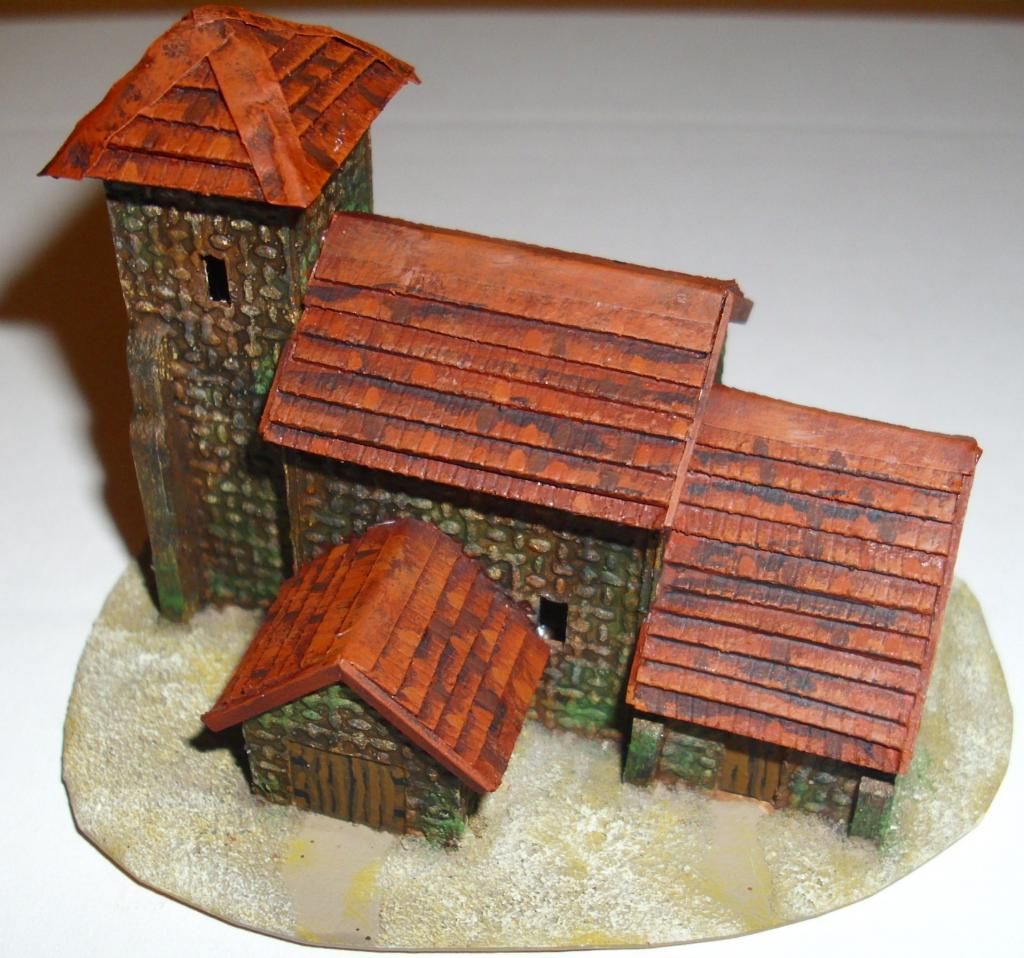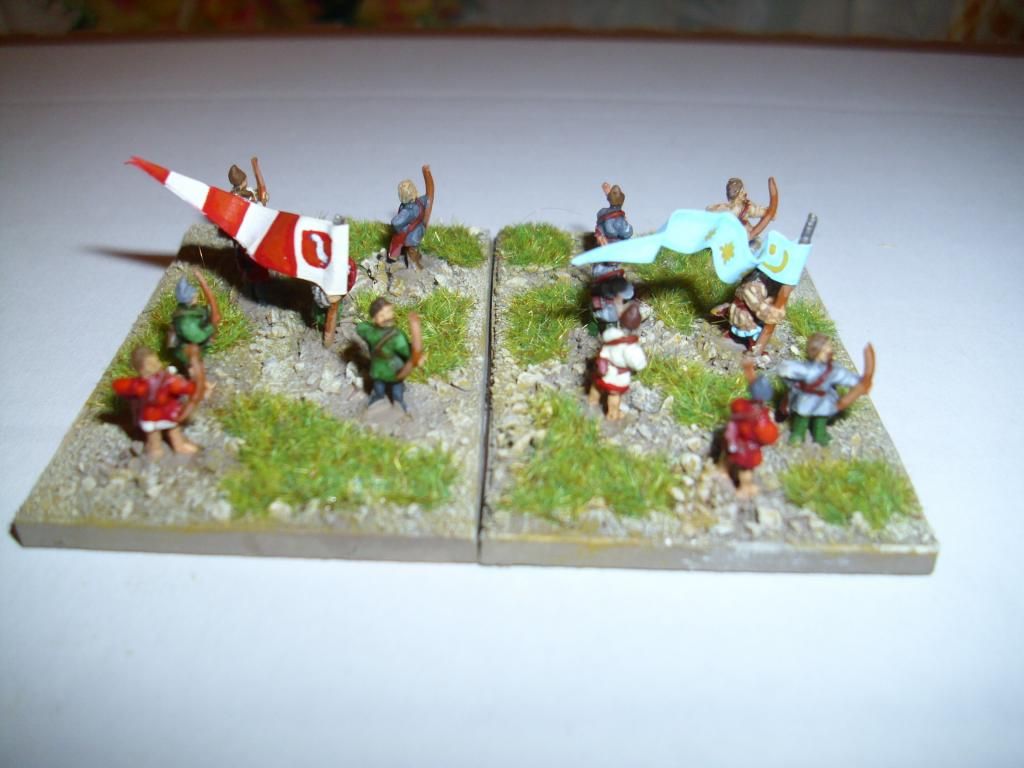The church, which is now conveniently the museum of the battle of Liegnitz, was built as the Church of Holy Trinity and the Blessed Virgin Mary at the end of the thirteenth century but looks older. This is a photo from the site -unfortunately only in Polish- and can be found here. According to the spiel (using Google translate) the church was burnt down twice during the Thirty Years War but was rebuilt both times. Link to the Museum website is http://www.museo.pl/content/view/1118/377/
My model, which has been altered slightly for one reason or another is based on this. Luckily, and for a change, there are pictures on the net that cover three of the four faces with only the tower aspect left out.
Using the ubiquitous cereal packet card I marked out the various walls. You may notice the porch walls aren't on there just yet.
When I was in Wilko's the other day I grabbed a 'sample' of a piece of wallpaper that was a reasonably good representation of stonework, bit regular but not too bad. Using PVA I glued all the pieces onto the paper making sure that the lines of 'stones' would be horizontal to the ground. Once it was dried I cut out the windows using a new craft blade.
The tower was glued together first to use as a square base and stuck to an oversize piece of card that will be eventually cut down to be the base then the other three parts were glued to it. Once it had all dried I realised that the smaller of the the two had been put on the wrong way round and the door should have been on the other side but then I did say it was based on the real thing. (That's my excuse anyway.) You can also see the buttresses that I added to break up the regularity. The 'brickwork' wallpaper can be seen to good effect.
The whole building has been given a coat of chocolate brown undercoat and after various dry brushes and washes to show different colours of stonework this is what it looks like. The base has been trimmed, textured with sand and painted. In both of the larger buildings I have glued ordinary stones to add some weight to the model.
Here is my method for making tiled roofs. Long strips of cereal box card are scored more than half the width with the back of a craft knife blade. Starting from the bottom, strips are glued down with the next layer overlapping the previous. The edges of both sides have been exceeded but it doesn't matter because it can be trimmed when the glue has dried.
Da,da! The almost-finished model. Everything is done apart from adding some areas of flock on the base and possibly some ivy climbing up one or a couple of walls.Fascia boards of card have been glued along the ends of the roofs to cover the lines of tiles.
PS The white bits in the lower picture have since been painted.

THE WORDS OF SUBEDAI An ongoing monologue about the trials and tribulations of life in general, being an avid reader, figure painter, terrain modeller, part time wargamer -with a rather scary fixation for the Mongols- part time rule writer, aspiring writer and photographer, very amateur artist and being a follower of both West Ham United and Sittingbourne FC...ALL AT THE SAME TIME!!!
Monday, 24 March 2014
Sunday, 23 March 2014
Some catching up to do (blogwise that is)
Since my last post I have gone to town a bit but up until now haven't documented any of it. I have painted another unit of levy infantry from the town of
Jędrzejów -see also the archers below- and four units of light infantry, three archers and a crossbow, all of which are briefly documented below.
As the units are all basically the same I have only taken photos of the different standards for each of them and left off the other bases. All the standards are conjectural by the way.
On the left is the only unit of crossbows in the army while on the right is the standard for a unit of archers. Both are from the town of Jędrzejów on the border
between the states of Lesser Poland and Kraków and puts it 21
miles (33km) to the west of Chmielnik so if it fought anywhere it was more
likely to be at Chmielnik.
The second photo is of the other two units of archers. The unit on the left is from the Lubomirski estates from south-eastern Poland while the right hand unit is from the estates of the Jastrzębiec clan.
From the
beginning of January I started to keep a record on my painting progress, so
another Ecxel table was produced. In that month I painted 64 cavalry and 17
infantry; in February I got better and painted 33 cavalry and 76 infantry.
Now it’s mid
March and the painting has slowed down a little –only 6 cavalry and 59 infantry
to date- but that’s because in my hour a day I am making a few bits of terrain.
I have started with a model based on the church at Legnicke Pole which
apparently pre-dates the Invasion. More on that in the next post.
Subscribe to:
Posts (Atom)

